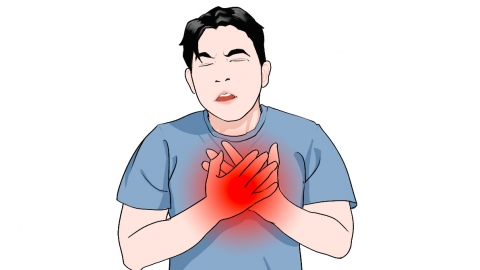How to treat sharp chest pain
Generally, needle-like chest pain may be caused by muscle strain, emotional stress, costochondritis, pleurisy, angina pectoris, and other conditions. Treatment options, under a doctor's guidance, may include regular posture adjustments, emotional management, and medication. If discomfort occurs, timely medical attention is recommended. Detailed explanations are as follows:

1. Muscle Strain
Prolonged incorrect posture, such as slouching, long-term desk work, or excessive exercise, can keep the chest muscles in a tense state, leading to muscle fatigue and spasms, causing needle-like chest pain. It is important to maintain good posture, adjust posture regularly during work, warm up sufficiently before exercise, and relax muscles promptly after exercise to avoid excessive muscle fatigue.
2. Emotional Stress
When experiencing intense emotional fluctuations such as high tension, anxiety, or fear, the sympathetic nervous system becomes excited, causing chest muscle tightness and blood vessel constriction, resulting in needle-like chest pain. One should learn emotional management techniques, such as deep breathing exercises, meditation, yoga, and other methods to relieve stress, maintain emotional stability, and avoid long-term mental stress.
3. Costochondritis
Costochondritis may be related to viral infections, chronic strain of the costo-sternal joint ligaments, endocrine disorders, and other factors. Inflammation of the costal cartilage stimulates surrounding nerve endings, causing needle-like chest pain, possibly accompanied by local tenderness, swelling, and other symptoms. Under a doctor's guidance, medications such as ibuprofen sustained-release capsules, diclofenac sodium enteric-coated tablets, and mecobalamin tablets may be used for treatment.
4. Pleurisy
Pleurisy can be triggered by bacterial or viral infections, autoimmune diseases, and other factors. When the pleura becomes inflamed, the inflammation irritates the nerve fibers on the pleura, causing needle-like chest pain, which may also be accompanied by fever, cough, sputum production, chest tightness, and other symptoms. If it is tuberculous pleurisy, treatment under a doctor's guidance may include isoniazid tablets, rifampicin capsules, pyrazinamide tablets, and other medications. If it is bacterial pleurisy, medications such as cefuroxime axetil tablets, levofloxacin tablets, cephalexin capsules, and others may be used as directed by a physician.
5. Angina Pectoris
Angina pectoris is mainly caused by disease factors, psychological and emotional factors, environmental factors, physical exertion, and other causes. When myocardial ischemia and hypoxia occur, acidic metabolic products are produced that stimulate cardiac nerve endings, causing needle-like chest pain, possibly accompanied by chest tightness, palpitations, shortness of breath, and other symptoms. Under a doctor's guidance, medications such as nitroglycerin tablets, aspirin enteric-coated tablets, and atorvastatin calcium tablets may be used for treatment.
In daily life, ensure adequate sleep to aid body recovery and maintain stable cardiac function; engage in moderate aerobic exercise to enhance cardiopulmonary function; quit smoking and limit alcohol consumption to reduce the risk factors for cardiovascular diseases.






